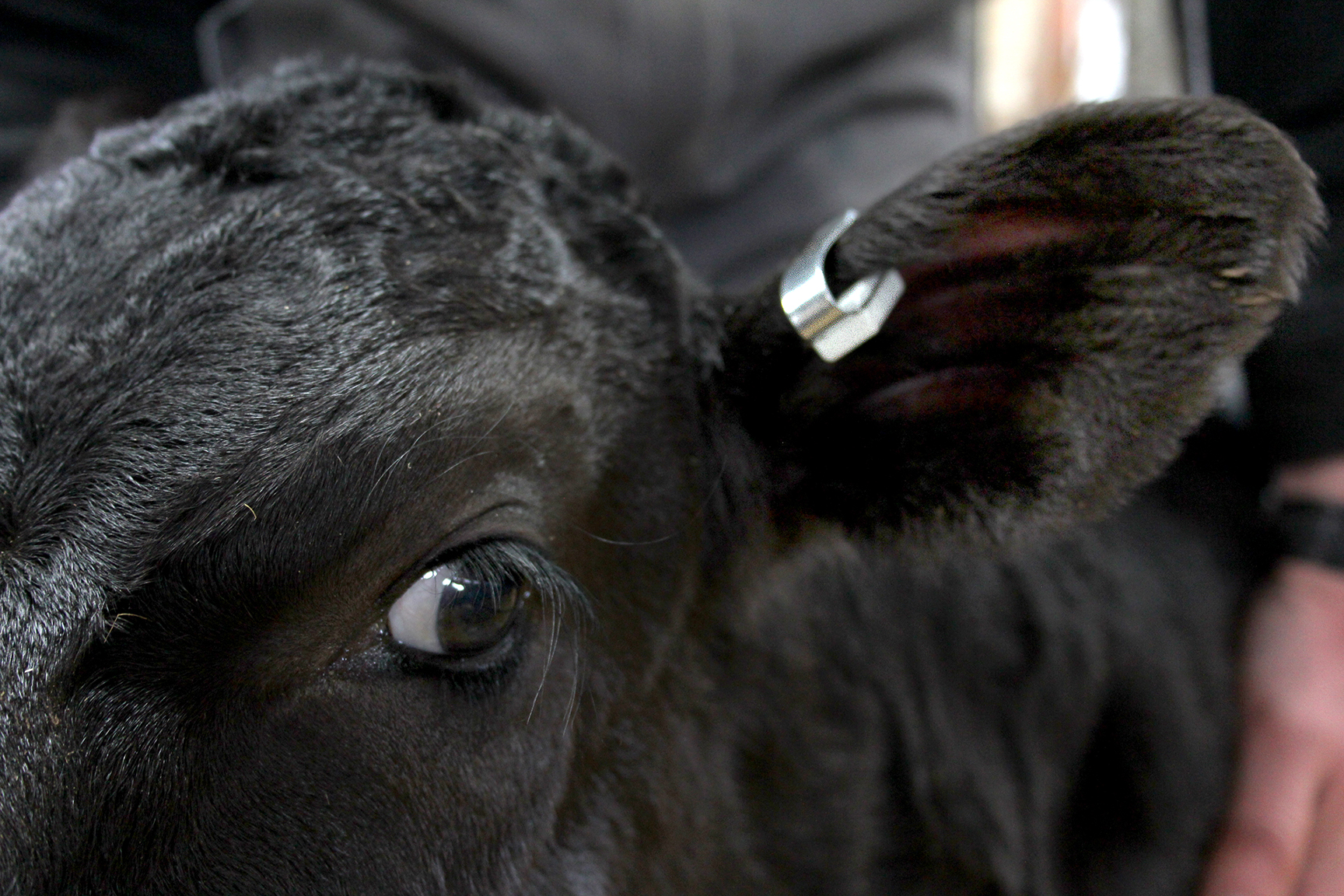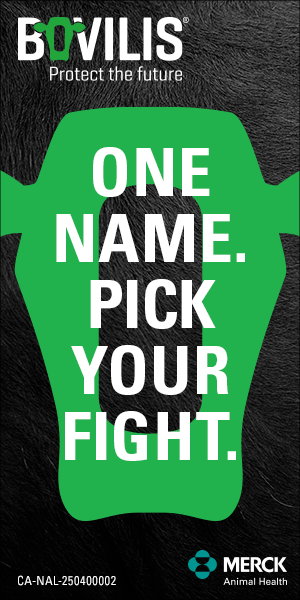AB Direct - Steers
Rail: ---
AB Direct - Heifers
Rail: ---
US Trade- Steers
Rail: ---
US Trade - Heifers
Rail: ---
Canadian Dollar
0.01

Ear tag retention comes down to best management practices
Lost ear tags are a costly and frustrating reality on Canadian cattle ranches. Yet, tags play an integral role in in disease outbreak investigations, as well as in maintaining the credibility of Canada’s traceability system.
The Canadian Cattle Identification Agency (CCIA) both examines and investigates reports of retention issues on an ongoing basis. Most of the issues around retention come down to human error, which is why the agency launched its “Retention Matters” campaign earlier this year. Through the campaign, industry experts offer best management practices to improve tag retention.
Tag retention issues an easy fix
Replacing lost ear tags is a frustrating and inconvenient task, but it doesn’t have to be. In fact, most industry experts believe the issue is easily resolved by following a series of best management practices.
“Retention issues with the tags that producers have to apply to their cattle is still a long standing issue,” says Richard Hilton, Communications Manager, CCIA. “However, in the research that we have done over the years, which is based on the feedback that we get from producers, 99 times out of 100, the retention issue has nothing to do with the design of the tag itself.”
Ear tag loss, he says, tends to be the result of incorrect application or using the wrong tag for the environmental conditions the cattle live in.
Paul Laronde, tag and technology manager at CCIA, says most tag retention issues come down to human error. As an ear tag expert, Laronde played an integral role in developing the Retention Matters campaign. According to him, tag retention starts with having the right setup. It’s important to restrain the animal, says Laronde.
“Make sure that the animal is not moving around and that you can put the tag in exactly where it’s supposed to go, as per the manufacturer’s instructions,” he says.
To ensure proper hygiene, keep a bucket of water and an antiseptic such as chlorohexidine on hand. The best practice is to clean the area where the tag is to be applied, being careful to wipe dirt away from the insertion point. Cleanliness will keep contamination at bay, and increase tag retention.
“I appreciate there’s a cow coming through every 20 seconds, and you don’t have a lot of time,” Laronde says. “Just give it a quick wipe and get on with it. If you look at proper procedure and try and make that work as best you can in your operation, then hopefully that will give you better success.”
The right setup includes pairing the right tag with the right applicator. Applicators are not universal, nor interchangeable. Laronde suggests keeping a spare applicator and a spare applicator pin on hand in case of trouble arises during a tagging session. Producers who are uncertain about tags and applicators should check the Retention Matters website for further guidance.
“Your best chance for success is using the right applicator – one that’s in good condition,” says Laronde.
Proper application also comes down to correct placement. The ideal location for the tag point is between the two ridges of cartilage that run across the ear from the head out to the tip.
“You want the female portion of the tag facing forwards, with the stud at the rear,” Laronde explains.
This will feel unnatural to first-time taggers, but it is correct. When inserted backwards, tags are more likely to catch surfaces such as holding pens, alleyways or feeders.
Tag retention hinges on the tag being fully engaged. This can be especially challenging as fatigue sets in after a long tagging session or in colder conditions.
CCIA has changed testing standards to make sure that the amount of pressure required to lock a tag is not outrageous. In sub-zero temperatures, Laronde recommends keeping plastic tags warm throughout the application process, as plastic becomes inflexible in the cold. Alternatively, producers may want to check out the Shearwell metal CCIA tag. Laronde says it works well as its flexibility doesn’t change in the cold.
“When ear tags are put in correctly, they rarely fall out,” he says.
New identification and traceability regulations on the horizon
CCIA’s campaign couldn’t come at a better time. Last April, CFIA announced that it was seeking comment on a set of proposed amendments to livestock identification and traceability regulations.
“The proposal to amend the regulations is to address some gaps in the existing traceability system,” says Heather Brown, National Manager for CFIA. “The proposal would include goats and farmed cervids, such as elk and deer. One of the reasons we want to include those species is that a lot of those ruminant species share the same diseases. You want to be able to respond and have identification traceability for all of the ruminant species so that producers are protected whether they have a cow, a sheep, or a goat.”
The proposed amendments also included: shortening the time period allowed to report an event to better support an efficient response to disease outbreaks; adding a requirement to provide information about the geographical location of sites where animals are located; and requiring the reporting of domestic movements of livestock.
Double tagging reduces risk of loss
Alberta beef farmer Rob Somerville doesn’t have tag issues on his farm, mainly because he’s implemented a two-tag system. He uses an ID tag, as well as RFID tags for gathering data. Using two tags provides him with a strong back-up system.
Somerville uses Allflex tags. They’re easy to access locally, and they stay in pretty well.
“We replace maybe 20 tags a year between our 400 cows and calves,” he says.
In the past 10 years, he’s only had one cow lose both tags. “If one tag falls out, it’s not really a big deal,” he says.
Double tagging hasn’t just kept frustration at bay. It’s also helped Somerville tighten up his herd records. The RFID tag electronically holds important data, such as weight and vaccination records.
“When animals lose tags, it creates gaps,” he says. “This is just easier and the RFID tag fits in so well with this data gathering. No clerical errors, no having to write down numbers in cold weather with cold hands. The electronic system just gets it done.”


